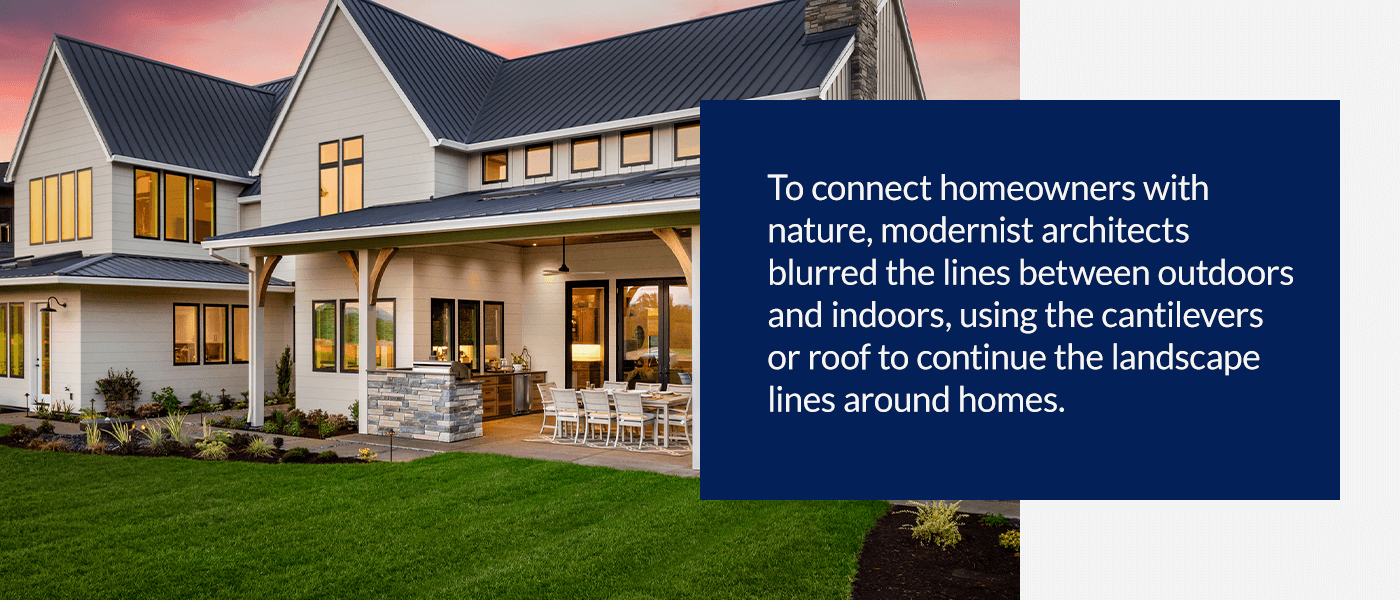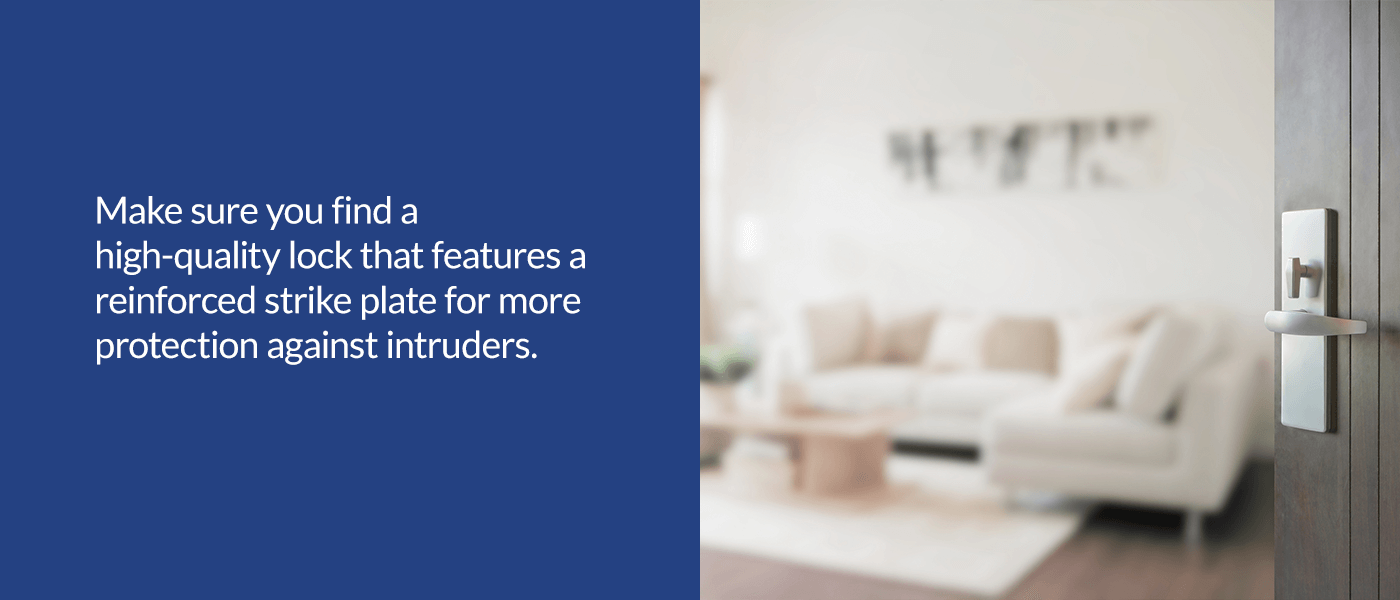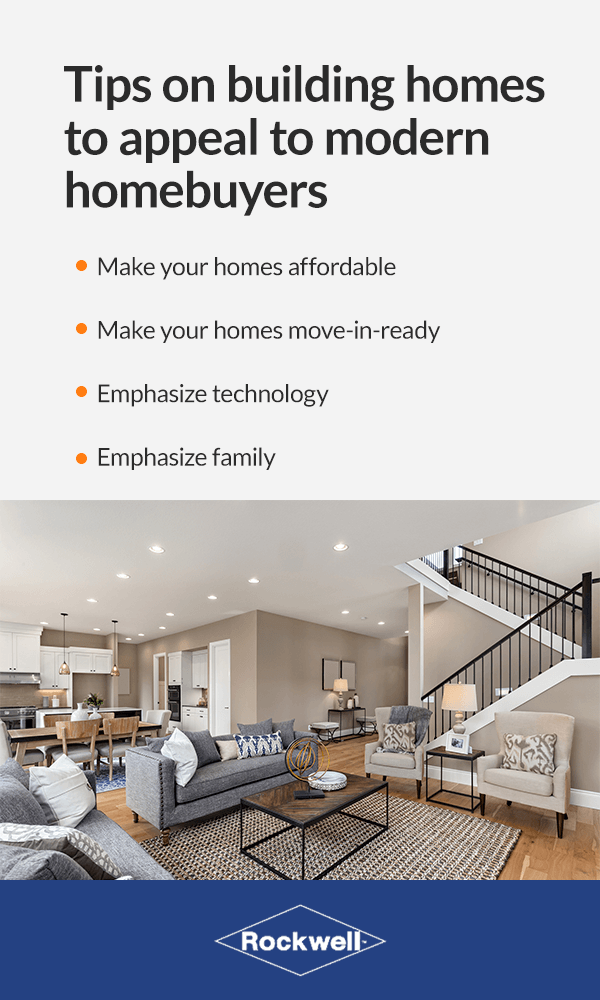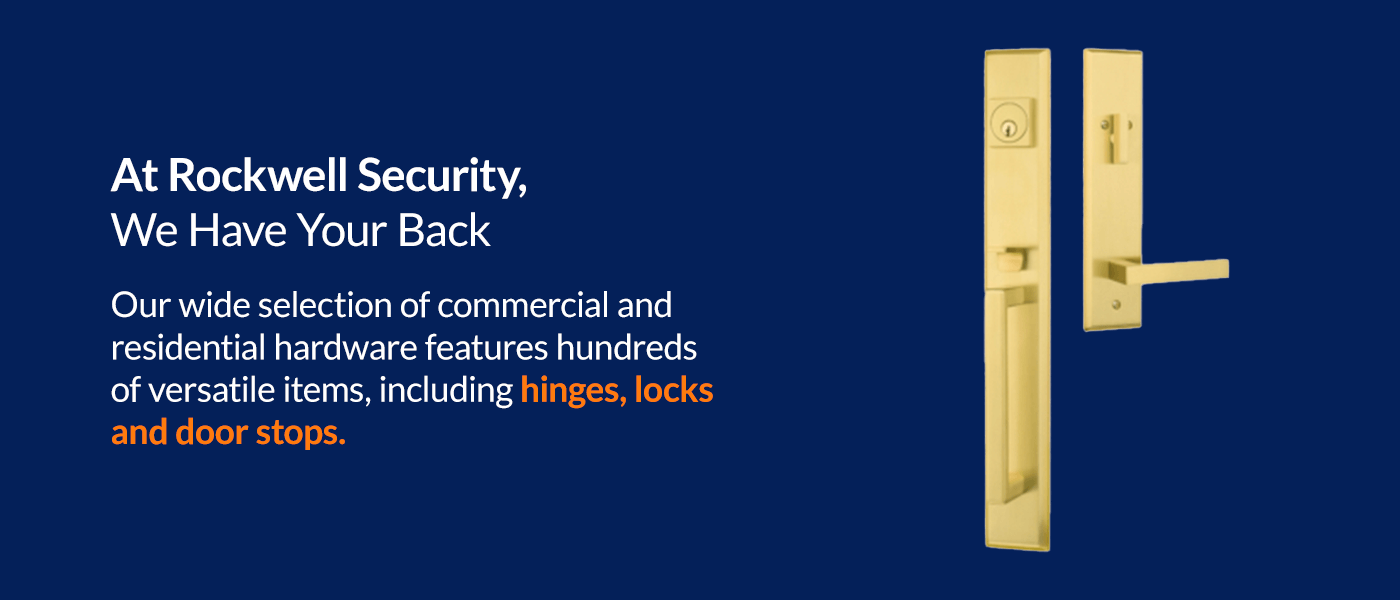Building a contemporary home that reflects current architectural trends involves making several crucial decisions, including door hardware. In this article, we’ll advise you on how to pick modern, safe door hardware and where to find the products in the industry.
What Is Modern Homebuilding?
Our customers often ask us, “What is modern?” To answer that question, we’d like to start with a brief history lesson.
Early 20th Century
Modern design emerged as a response to the ornate architecture of the late 1800s. The first modernist architects wanted to defy the traditional architectural styles of their time, including Victorian, Edwardian, eclecticism and, in the 1920s, Art Deco.
Modernist architects sought to design homes with a notable absence of ornamentation. These homes featured open floor plans, wide expanses of glass walls and windows, intentional asymmetry and strong horizontal composition. Their main intent was to design living spaces with a focus on function, removing unneeded frills.
Modernist architects also wanted their designs to help homeowners feel closer to nature. During the early 1900s, the West was quickly becoming a technology-driven industrialist society, and designers felt people were becoming less creatively and spiritually fulfilled as a result. To connect homeowners with nature, modernist architects blurred the lines between outdoors and indoors, using the cantilevers or roof to continue the landscape lines around homes.

While many of this era’s homes may appear stark or cold due to their sharp lines and austerity, many are inviting and welcoming on the inside. This warmth is primarily due to the construction materials and the homes’ overall interior design, which often use rich, dark woods and marble featuring warm color accents.
Mid-20th Century
Modern style in the middle of the 20th century featured many of the same design elements used by earlier modernist architects, though these elements were primarily in home interiors. Some of the most prominent characteristics of the mid-century modern style were square homes, flat roofs, low-key furnishings and a monochromatic color palette. However, despite the attention to minimalism, mid-century modern homes avoid a cold, stark feeling.
Modern Homes Today
While historians have yet to agree upon the exact period, most experts agree that modern design’s golden period occurred from the early ’20s to the late ’50s, which is why it is typical to hear terms like “retro” and mid-century modern” in reference to modern design.
So, despite the fact that the word is synonymous with being current and up to date, “modern” design is roughly a century old. To refer to design and architecture that are trendy right now, we use the term “contemporary” instead.
First Things First: Safety and Security
When choosing hardware for your door, you might get carried away with all your options for colors, styles, materials, etc. While all these considerations are crucial, don’t forget your door hardware’s single most paramount purpose — to provide safety.
To make the best security decisions, you’ll first want to learn the jargon, which will make your search less confusing. You’ll have several design types to pick from.
- Single-cylinder locks: Single-cylinder locks open from the outside with a key and from the inside with the turn of a thumb-knob. Other than the keyhole on the outside, some recent single-cylinder locks also have a keypad allowing you to unlock the door by entering a code. This feature benefits family members who don’t want to search around for their keys in a pocket or purse.
- Double-cylinder locks: Like single-cylinder locks, double-cylinder locks also open with a key from the outside, but on the inside, there is no thumb-knob. Instead, the same key locks and unlocks the door. A double-cylinder lock offers break-in security for doors with glass windows, as intruders cannot break the glass to reach in and unlock the deadbolt because it doesn’t have a thumb-knob. However, be aware that double-cylinder locks are often illegal according to local fire codes, since they make it more challenging to escape from a fire.
- Vertical locks: This lock type features a vertical bolt extending through various rings to secure the door. A metal plate called a strike plate connects inside the doorframe. When you close the door, the strike plate’s steel rings interlock with extra steel rings on the lock itself. Vertical locks can feature single or double cylinders and are most common in commercial applications like apartment complexes and hotel doors.
- Smart locks: Smart locks enhance security and convenience in several ways — they use your Wi-Fi connection to send information to your devices, and you can operate them via voice control, fingerprint recognition or your smartphone. These smart locks may also feature motion-activated cameras that record any visitor who comes to your door.
When making your selection, remember the following considerations.
Look for Reinforced Strike Plates
The strike plate, which refers to the metal plate connected inside your doorframe, plays a crucial role in the locking system. When you lock the deadbolt, the steel bolt goes into a hole located in the strike plate. A lower-quality lock may have a flimsy strike plate that easily bends if someone kicks the door. Make sure you find a high-quality lock that features a reinforced strike plate for more protection against intruders.

Lock Quality Ratings
When searching for the most durable door locks available, it pays to familiarize yourself with the lock ratings set out by the American National Standards Institute. This system gives locks a rating of 1, 2 or 3 based on their durability and ability to withstand a forced entry attempt.
- Grade 1: Grade 1 is the best rating a lock can receive. Though once mainly used on industrial buildings, Grade 1 locks are becoming increasingly standard in homes.
- Grade 2: Grade 2 locks are perhaps the most common found in homes today. Made from high-quality steel, they’re sturdy enough to withstand the majority of forceful entry attempts. Unless you have higher security needs, installing Grade 2 locks on your home will probably suffice.
- Grade 3: Deadbolts with a Grade 3 rating offer a fair amount of protection, but some of their components may be substandard and unable to deter a more determined intruder’s attempts. They’re also not as long-lasting as higher-quality locks.
When picking out locks for your home, rest assured you won’t have to sacrifice security for style. Locks of all grades come in a wide array of styles and colors, making it easy to match your home’s decor.
Show Your Style
Door hardware is an excellent opportunity to show off your creative flair, and if you’re searching for some inspiration, review some of the most popular recent door hardware trends.
- Graphite nickel: Also known as gunmetal, graphite nickel is a striking finish that has been popular in Europe for quite some time, and has only recently made its way to the U.S. Elegant, subtle, natural and poignant, this hue resounds with nature’s beautiful light and gracefully complements most interior spaces.
- Brushed nickel: This sleek, radiant and opulent finish complements smart rooms with its charm and universality. It’s versatile and matches stainless-steel accessories. Like many other trends in the past year, brushed nickel is peaceful, earthy and subtle.
- Longer accessories: In the past few years, architects and designers have started to specify oversized accessories. That’s because doors are getting taller and broader, and existing accessories like pull handles and flush pulls are no longer cutting it. After all, a two-foot-long pull handle looks comically tiny on a nine-foot-tall door. To match these increased door sizes, pull handles and flush pulls are now available in much longer lengths than before.
- The Hampton style: The Hampton look — defined by its palette of natural textures, whitewashed linens, white timber finishes and nautical blues — is making a comeback. Many handle styles go well with this trend.
- Overlapping of function and form: Only a few decades ago, a handle was merely a device used to lock and unlock a door. Now, it’s more like a door’s fingerprint — a unique aspect of the space that defines a room’s atmosphere. Over many years, well-known designers have developed and refined the art of handle design. Door handles embody form, function, security and art.
- Art seen in design: These days, consumers are much savvier about architectural finishes and styles and will insist all the elements in their space entwine into a single overarching, beautiful piece of art.
- Sustainability: One of the most enduring trends in the past year is sustainability and being more aware of our shared environment, and many consumers have wanted to bring nature’s nuances into their homes. More homeowners are filling their spaces with the lighter hues of natural light. We can describe this trend as “biophilia,” which means “love of nature.” Consumers are choosing durable, recyclable finishes like copper, brass, rustic brass and leather for their doors, thus helping protect Mother Earth.
- Two-tone inclusion: Designers have long loved chrome accessories, particularly in bathrooms. However, coordinating chrome style with other design elements in a house has traditionally been challenging. Luckily, two-tone finishes have emerged as a solution to this problem. With two-tone handles like chrome and brushed nickel, homeowners can now seamlessly mold all rooms in their home by tastefully tying both elements into one.
- Respect the past and embrace the future: Another trend that’s emerged in many of the latest finishes and styles is respect for what has come before while also incorporating the best of modern-day design and technology.
- Bacteria-free handles: The COVID-19 pandemic has made homeowners more concerned about the spread of germs, leading many to integrate bacteria-free handles into their homes. Quite a few companies are now supplying high-end door handles to help combat this problem. These handles are inherently superbug-resistant, with a finish that strengthens the material’s ability to resist these threats.
Selling Your Dream Home

In previous decades, it was easier for builders to attract homebuyers — construct a home with some curb appeal, put it on the market and you’d likely get lots of bites. However, these days, homebuyers are pickier. They want distinctive, technologically advanced homes with exciting, family-friendly layouts — and at a reasonable price.
Evolving consumer tastes have forced builders to change their approach. Below are some tips on building homes to appeal to modern homebuyers.
- Make your homes affordable: Due to the economy’s current state, many shoppers today are savvy and cautious. While high-end homes will always have a niche market, some builders are making their homes too luxurious, deterring potential buyers. These homes may sit on the market for years before someone finally takes the plunge. Building quality homes at affordable prices will attract more buyers now than ever before.
- Make your homes move-in-ready: Most potential buyers are looking for houses that are ready for them to move into immediately — not ones that need thousands of dollars of upgrades before they feel like homes. However, if you are building a bare-bones house that will require upgrades later, ensure potential buyers know this. If customers suspect any attempt at dishonesty, there is a good chance they will walk away altogether.
- Emphasize technology: Perhaps the most significant difference between modern and older floor plans is a focus on tech. Homebuyers are interested in properties with built-in whole-house networking and extra electrical outlets for all their devices.
- Emphasize family: These days, families looking for a safe, healthy place to raise their kids are the most frequent homebuyers. Consider building neighborhoods with spacious yards and lots of communal areas where family members can interact.
At Rockwell Security, We Have Your Back
Rockwell Security is proud to be a leader in luxury, modern home safety. We exclusively use top-quality materials like solid brass and aluminum, which provide lasting durability. Our products also come in a vast array of colors and finishes, allowing you to easily match your home’s decor.
Our wide selection of commercial and residential hardware features hundreds of versatile items, including hinges, locks and door stops. We also offer assorted specialty products that are available for limited times.



Trackbacks & Pingbacks
[…] we speak of modern-style doors, we’re referring to the modernist tradition of architectural style that flourished from the late 1920s to the mid-1950s, often referred to as “mid-century […]
Comments are closed.